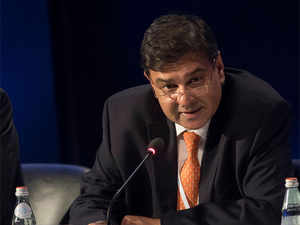
Though Patel has cited personal reasons for quitting the RBI, given the recent controversies, it's not unreasonable to assume that Patel quit when the RBI autonomy faced pressures from the government.
NEW DELHI: What exactly were the issues that sparked the battle between the Reserve Bank of India (RBI) and the government which has led to the resignation of governor Urjit Patel. Though Patel has cited personal reasons for quitting the RBI, given the recent controversies, it's not unreasonable to assume that Patel quit when the RBI autonomy faced pressures from the government. The fire was lit with RBI deputy governor Viral Acharya's speech on October 26 defending the autonomy of the central bank. It brought to the fore the simmering tension between the government and the RBI who did not see eye to eye on a range of issues related to liquidity, credit flow and the controls governing weak banks.
In 2018, the RBI and the government developed differences over at least six major issues which turned into a full-fledged battle culminating in Patel's resignation:
1. Interest rates
The spat began with the government unhappy with the inflation-focused RBI for not cutting interest rates – and even raising them. However, it spilled over into regulation, something the central bank believes is its exclusive domain. What followed was a host of issues related to regulation where both the parties asserted against each other.
2. NPA classification
RBI’s February 12 circular on classification of non-performing assets (NPAs) and norms of loan restructuring was the next flashpoint. The government saw it as overly harsh, and indeed it drove all but two state-run lenders into the red.
3. Nirav Modi scam
Around the same time, as the Nirav Modi scam broke, the government hit out at the RBI on supervision, drawing an almost-immediate rebuttal with Patel seeking more powers to oversee public sector banks so that they are at par with their private sector peers.
4. NBFCs
The government has been insisting that RBI step in to provide relief to non-banking finance companies (NBFCs), which are grappling with a cash crunch after IL&FS defaulted on repayments. The central bank has refused to play ball.
5. Mor's removal
In September, Nachiket Mor was removed from the RBI board more than two years before his term was to end without formally informing him. This irked the central bank brass. His removal was seen to be linked to his vocal opposition to the government's demand for a higher dividend.
6. Payments regulator
A separate payments regulator has been another friction point with RBI stating its position publicly on why it did not support the move. In fact, it went to the extent of releasing its dissent note on a separate regulator on its website.
No comments:
Post a Comment